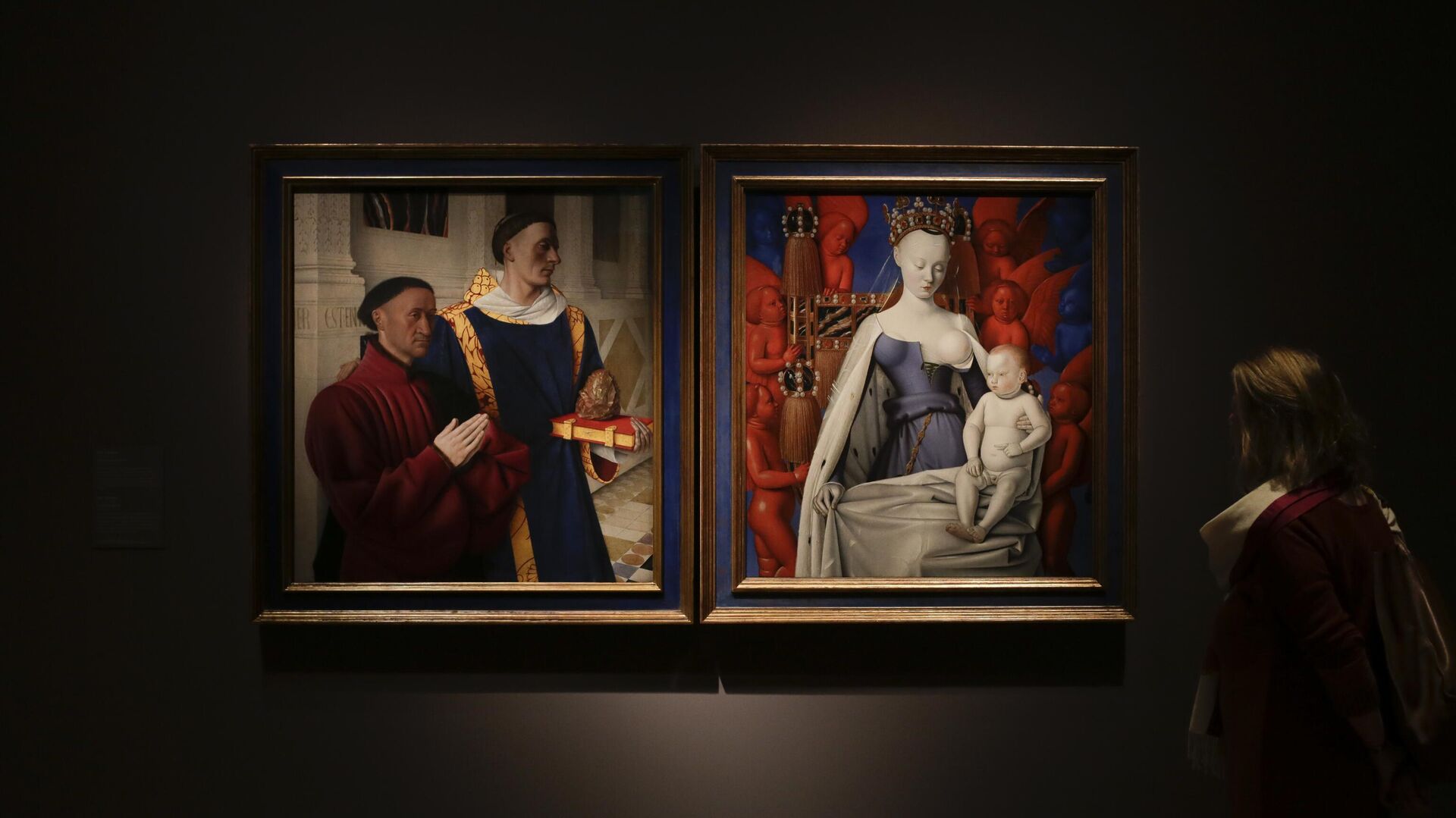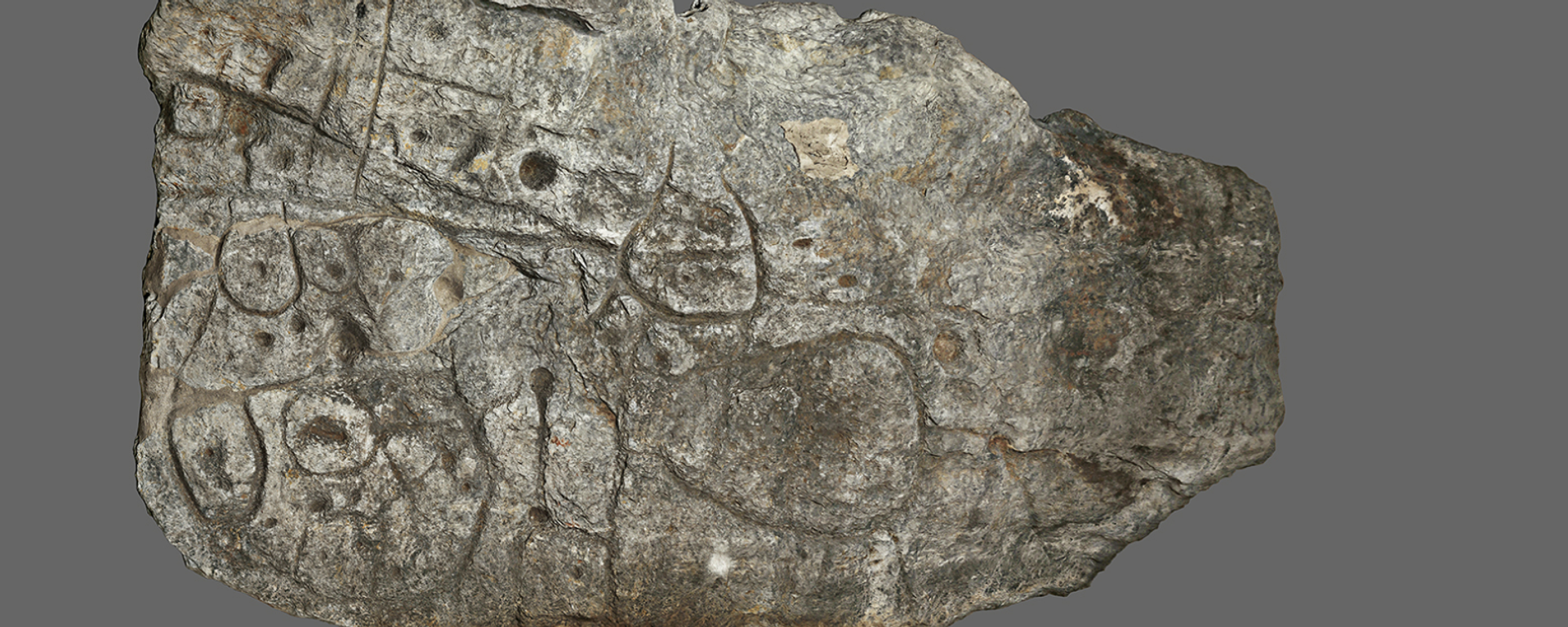Bizarre Rock in Northern Renaissance Painting Now Identified as Ancient Stone Tool

© AP Photo / Markus Schreiber
Subscribe
Hand axes which are made from stone are the longest-used tools in human history. According to known examples, the first used were over 1.75 million years ago which coincides with the human ancestor Homo erectus.
The “Melun Diptych” by Jean Fouquet is a devotional, religious painting from the mid-1400s. The right panel depicts the Virgin and Christ child surrounded by blue and red cherubim. The left panel depicts Etienne Chevalier with his patron saint; Saint Stephen, who holds a book with an oddly shaped rock placed upon it. The Northern Renaissance diptych was commissioned by Chevalier, who served as the treasurer for King Charles VII of France.
Art historians have often referred to the rock as a reference to Saint Stephen’s martyrdom, in which he was stoned to death.
But recently, a team of researchers have taken a second look at the oddly shaped stone. Experts from Dartmouth and the University of Cambridge say the stone is likely the earliest artistic depiction of an Acheulean hand axe. These devices were used by our ancient ancestors, most likely the Homo erectus, to cut meat, wood and to forage for food.
2/2 Étienne Chevalier is joined by Saint Stephen (with his souvenir stone) on the left wing of the Melun diptych, 1450. By Jean Fouquet. pic.twitter.com/CMbiEko0dm
— Dr. Peter Paul Rubens (@PP_Rubens) September 10, 2023
But prior to the Age of Enlightenment, people believed these mysterious rocks were “thunderstones,” according to text from the mid-1500s. They believed these rocks were not tools used by our ancestors, but were instead, rocks which had fallen from the sky during storms.
In fact, Swiss physician and naturalist Conrad Gessner featured a print of the hand axe in his book, “De Rerum fossil” from 1565, and called the stones “jokes of nature.”

18 October 2023, 21:44 GMT
"I love this idea of connecting a hand axe—a utilitarian object that helped hominins survive half a million years ago—with a medieval French painting, which is so well-known that it's taught in introductory art history classes," said study co-author Jeremy DeSilva, a professor and chair of the Department of Anthropology at Dartmouth. "From the Paleolithic Age to the Renaissance and beyond, hand axes have been—and continue to be—part of human history."
Disregarding the hand axe representation, the oil on wood panel painting is already mysterious in style: the Virgin Mary and her child are painted in a ghostly white, while the rich red and blue cherubs placed behind them form a symmetrical pattern of shiny, sphere-like shapes. The image is certainly otherworldly.
The patron and saint are depicted in a more realistic, less idealized style, as the two kneel towards the Virgin Mary. The rock itself most likely intended to be a reference to Saint Stephen’s martyrdom, as Fouquet would not have known its true origin. But co-study author Steven Kangas, a senior lecturer in the Department of Art History at Dartmouth, has always had a feeling the true “rock” originated from an earlier time.
"I've known about Fouquet's painting for years and I had always thought that the stone object looked like a prehistoric tool," said Kangas. "So, this was always sort of stuck in the back of my mind, as something that I needed to pursue in the future."
Using an infrared analysis, Kangas and other experts found that Fouquet had gone to great care in order to sketch, paint, and rework his depiction of the hand axe. The French painter’s choice of color as well—color variations of yellow, brown and red—mimics the weathering of these stone artifacts which would have been made from flint or silica-rich rocks. And using an approach called Elliptical Fourier Analysis, they found a 95% match between the shape of the stone in the painting, and the shapes of Acheulean hand axes.
“The data from our shape, color, and flake scar analyses of the stone object in the painting were remarkably consistent with that of other stone age hand axes from where Fouquet lived," said study co-author James Clark, a graduate student in the Department of Archaeology at the University of Cambridge.
"Fouquet seems to have taken a special interest in the stone object, probably because he had seen one that struck his attention and imagination," added Kangas.
The study was published in the Cambridge Archaeological Journal.


